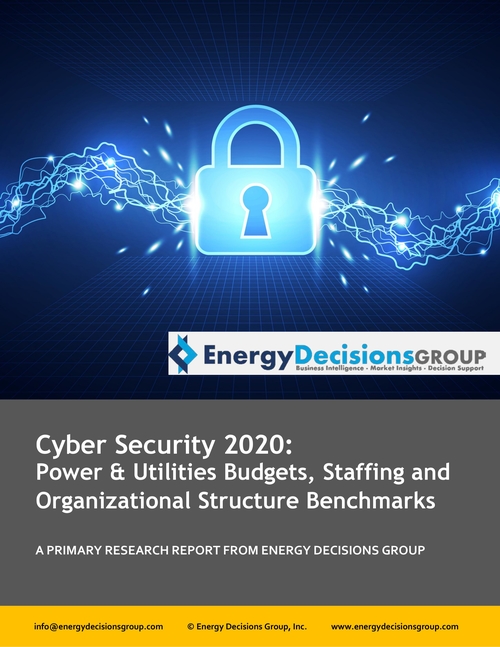Description
Cyber threats continue to pose substantial risk to companies’ operations and to power grids worldwide, and they continue to grow in number, source, frequency, sophistication and risk level. As such, in the power production, transmission and distribution, and utilities sectors, the cyber security function continues to grow in importance as much as it continues to mature operationally. Most power producers and utilities of size now have a fully matured cyber security function.
Today, companies face an increasingly complex regulatory environment. Cyber security departments are not only responsible for executing plans to maintain a level of risk that is acceptable to boards of directors, shareholders, and executive management, but they also must ensure compliance with mandatory cyber security standards set by regulatory authorities around the globe, such as the Federal Energy Regulatory Commission (FERC) in the US. Increasing regulatory requirements will impact both staffing and budgetary investments in the years ahead. Resource allocation decisions also will be driven by changing workloads as new technologies enable greater automation, new sources of threats arise, and increasing threat levels will challenge electric power and utility companies to keep pace in order to maintain acceptable threat levels.
We developed this report to provide hard-to-find benchmark data on power and utility companies’ cyber security functions. Specifically, the months-long research effort that culminated in this report examines and compares the budgets (including budget breakdowns into major spending categories), staffing levels, organizational structure composition, and projections for future changes in staffing and structure of the cyber security functions operating within a variety of power and utilities firms, including independent power producers (IPPs), investor-owned or privately-owned utilities (IOUs), public or municipal utilities (MUNIs), and cooperative utilities. Data analyzed in this report compare cyber security staffing levels to broader IT department headcounts and total overall company headcounts, and we develop a cyber security staffing model framework which enables readers to compare their own cyber security staffing levels to industry-wide benchmark metrics. The content for this report was gathered directly from senior-level cyber security, information technology (IT), information security, risk management / cyber risk management, and cyber program executives (including CIOs, vice presidents, directors and managers).
Data and Insights Included in This Report
- Cyber security department budgets, including budget breakdowns into major spending categories
- Projections for changes to cyber security budgets in the coming years, including factors driving those changes
- Cyber security staffing headcounts (internal employees and contract workers) broken down by seniority level
- Trends and analysis of companies’ future plans for staffing in the next few years, including factors driving changes to cyber security headcounts
- Analysis of cyber security organizational structures (stand-alone departments vs. multi-functional departments which include other functions, such as IT, risk management, corporate security, etc.)
- Comparisons of centralized, decentralized and matrix organizational structures
- Reporting relationships to executive management
- Plans for re-structuring cyber security departments in the next few years
Why Buy This Report
- Benchmark cyber security budgets and spending practices at power and utilities companies around the globe
- Compare your department’s staffing resources to those of other companies
- Right-size your department’s staffing levels
- Make the case to management for additional budget and staffing resources
- Understand how organizational structure supports or hinders business performance
- Inform decisions about departmental reorganizations
Report Contents:
Executive Summary
Summarizes the key findings of our research and develops implications and recommendations
Analysis of Companies Analyzed and Executives Consulted in This Study
Provides summary information and insights about the companies that we examine in this report and the executives who contributed to this research.
Cyber Security Budget Allocations and Analysis
Includes analysis of cyber security budgets, projections for future spending changes, and related trends at benchmarked companies.
Cyber Security Organizational Structure Insights and Analysis
Delves into the details of companies’ cyber security organizational structures, including analysis of centralized, decentralized and matrix approaches and the advantages/disadvantages of each; assessments of reporting relationships; and companies’ plans for organizational restructuring in the next few years.
Cyber Security Staffing Levels and Analysis
Includes detailed examinations of cyber security staffing levels, including breakdowns of headcounts (as measured in full-time equivalents, or FTEs) at various seniority levels, as well as break-downs of internal company employees versus contracted staffers. Reveals how cyber security employees’ time is allocated among core functions. Includes analysis of the reporting relationships at the senior-most levels, including the titles and roles of the top executives that oversee cyber security and the executives to whom they report, as well as projections for changes in staffing in the next few years. Also examines cyber security staffing as compared to key benchmarks, including total overall IT department headcounts and total company headcounts.
PURCHASING OPTIONS
Credit Card: Pay by credit card through the secure checkout process on our website.
Invoice / Purchase Order: To pay by invoice (with payment by check, wire transfer or automatic bank check/ACH) with or without a purchase order, please contact us by email at client.services@energydecisionsgroup.com. Or, you can submit your request on the “Inquire Before Buying” form on this product page, and we will contact you to finalize your purchase.
Have questions about this report? Want to learn more before you buy? Contact our account management team:
- Email us directly at client.services@energydecisionsgroup.com
- Or, submit your question(s) below and we will be in touch with you shortly.
Complete this form to download a report summary (PDF) containing a table of contents and other useful details to help you further evaluate this report.



